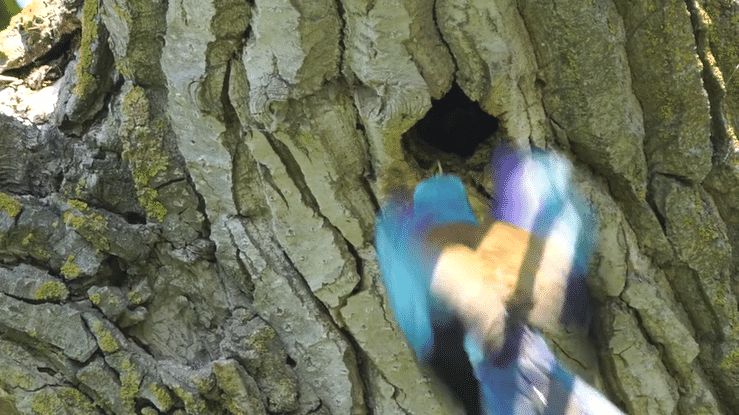
Jun 18, 2024 A Roller Bird Gathers No Moss
How animals migrate reliably from one place to another yearly has been an enduring puzzle. Donald Griffin, the discoverer of bat echolocation, also investigated bird migration to determine how birds could navigate the ocean. He and his colleagues tracked migrating flocks using a repurposed military radar nicknamed the Witch. The reader is directed to Volume 2 of Carolyn Ristau’s magisterial biography of Donald Griffin, which describes the various bird migration questions investigated and the technical challenges that were overcome.
Advancements in technology have revolutionized our understanding of bird migration. Today, we can attach lightweight, high-tech devices even to relatively small birds, such as the vibrant European Roller. These devices, tracked by satellites, provide us with unprecedented insights into the migratory patterns of these avian travelers. For instance, with its predominantly blue plumage, the European Roller breeds in Eastern Europe and Asia and then embarks on a 10,000-kilometer (≈ 6,200-mile) journey down the African continent to spend the northern winter in Southern Africa.
‘BirdLife South Africa’ trapped and equipped two European Rollers with lightweight satellite tracking devices (weighing less than 3% of the adult bird per BirdLife’s guidelines) that would not be too stressful for the birds on their arduous journey to Uzbekistan in the northern hemisphere. One bird was named Hera (after the Greek Goddess of the Skies), and the other was called Royal Wasi (derived from the word for “blue” in the local African language). The devices receive power from miniature solar panels roughly the size of a human fingernail.
On March 30 of this year, Hera embarked on her journey and reached Uzbekistan on May 15 (traveling 10,500 kilometers in 46 days). She rested for almost a month in Somalia to refuel for the final leg of the journey. Royal Swasi’s tracking signal was lost in the Horn of Africa, and her fate is unknown. Either the tracking device failed, or a human or animal predator killed her.
The study of European Rollers is of utmost importance, as they serve as a flagship species. Disturbingly, a 30% decline in their population has been reported over the last fifteen years. This decline and the global decrease in insect biomass, potentially linked to the use of neonicotinoid pesticides in agriculture, underscores the urgent need for our conservation efforts. The European Roller, an avian insectivore, is particularly vulnerable to these environmental changes.
BirdLife South Africa hopes to continue the project and fit satellite trackers to another five European Rollers in 2025. However, the trackers are expensive. Each one costs around $3,000, and the satellite tracking fees are around $75 per bird per month.
The signals birds use on their migration routes are still under investigation. However, research indicates that birds may use a variety of senses to find their destinations during migrations or to find their way back home after foraging for food. The possible navigation aids include using the positions of the sun or the stars, the polarization of sunlight, a sense of smell, and the earth’s magnetic field. The claim a decade ago that animals use the earth’s magnetic field to navigate and return to their home territory was initially treated with skepticism. However, a recent (2021) review by two of the leading promoters of navigation using magnetic fields suggested that magnetic sensitivity is widespread across the animal kingdom and that the earth’s magnetic field is a valuable source of positioning information for many different species of animals.
These studies continue to enhance our comprehension of birds and other animals’ abilities to navigate their world, reinforcing the interconnectedness of people, animals, and the environment.


